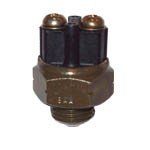dvd
Senior Member
On another thread people are discussing routines for anchoring. Got me thinking about developing new checklists for when I pick up my new (to me) trawler later this Spring. On past boats I always had checklists for things like pre-cruise inspection, start-up, leaving slip (or mooring/anchorage), anchoring, etc. (How many times have you seen fenders banging alongside outside the breakwater?)*
Started with lists when I started GA flying many years ago and kept it up through my practice as an anesthesiologist (set-up, pre-op interview, pre-induction, etc.). The lists didn't dictate my every move, but were guidelines in front of me to make sure nothing would be overlooked when it counted. They must have had some value - retired after 25 years with no malpractice cases.
So how do people use checklists on board? What do they look like? Where do you keep them? How do you create them?
David
Started with lists when I started GA flying many years ago and kept it up through my practice as an anesthesiologist (set-up, pre-op interview, pre-induction, etc.). The lists didn't dictate my every move, but were guidelines in front of me to make sure nothing would be overlooked when it counted. They must have had some value - retired after 25 years with no malpractice cases.
So how do people use checklists on board? What do they look like? Where do you keep them? How do you create them?
David

